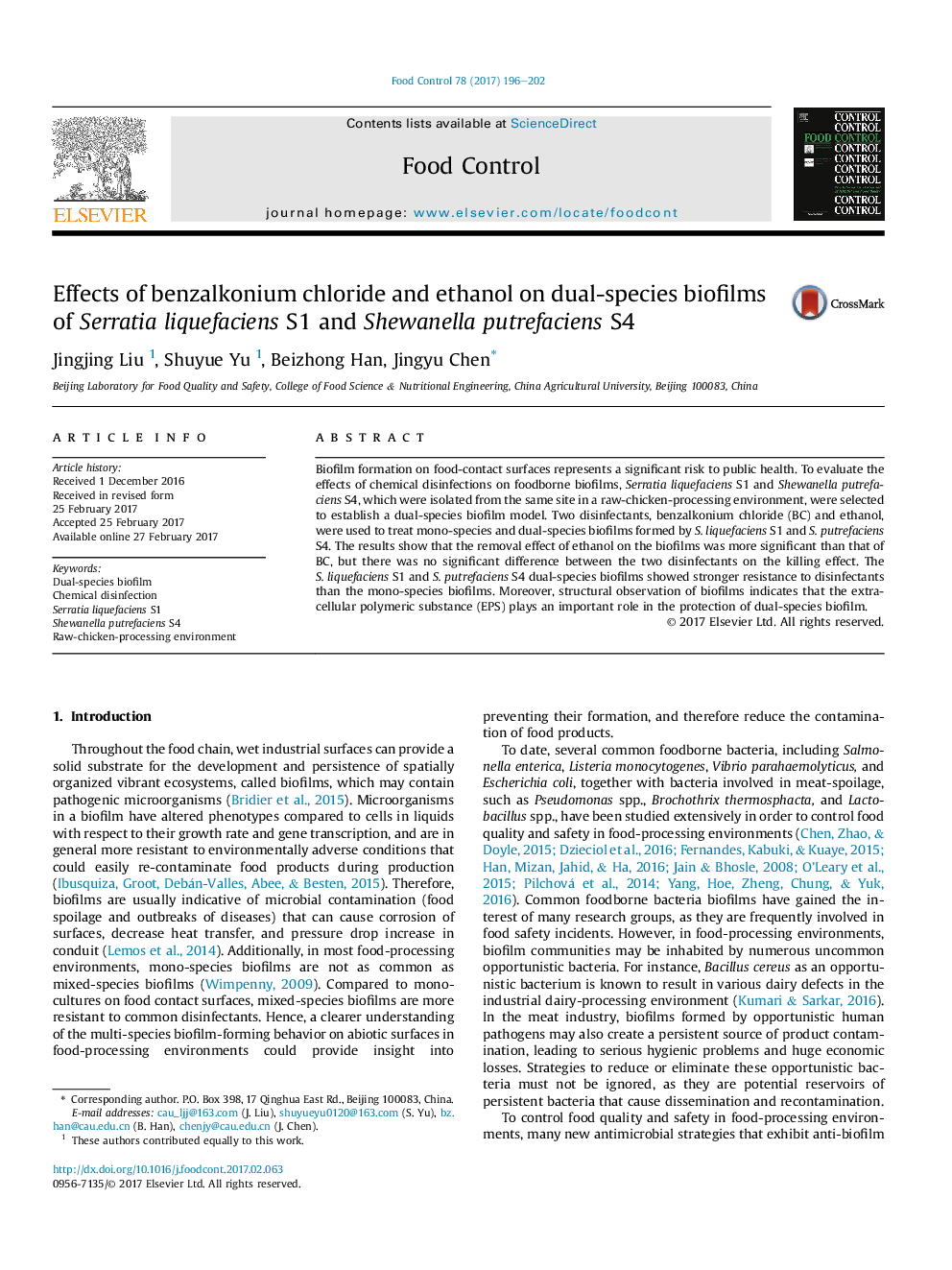| Article ID | Journal | Published Year | Pages | File Type |
|---|---|---|---|---|
| 5767506 | Food Control | 2017 | 7 Pages |
â¢Serratia liquefaciens S1 and Shewanella putrefaciens S4 were used as a dual-species biofilm model.â¢The removal effect of ethanol on the biofilms was better than benzalkonium chloride.â¢Dual-species biofilms were more resistance to disinfectants than mono-species.
Biofilm formation on food-contact surfaces represents a significant risk to public health. To evaluate the effects of chemical disinfections on foodborne biofilms, Serratia liquefaciens S1 and Shewanella putrefaciens S4, which were isolated from the same site in a raw-chicken-processing environment, were selected to establish a dual-species biofilm model. Two disinfectants, benzalkonium chloride (BC) and ethanol, were used to treat mono-species and dual-species biofilms formed by S. liquefaciens S1 and S. putrefaciens S4. The results show that the removal effect of ethanol on the biofilms was more significant than that of BC, but there was no significant difference between the two disinfectants on the killing effect. The S. liquefaciens S1 and S. putrefaciens S4 dual-species biofilms showed stronger resistance to disinfectants than the mono-species biofilms. Moreover, structural observation of biofilms indicates that the extracellular polymeric substance (EPS) plays an important role in the protection of dual-species biofilm.
